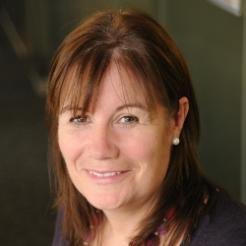Carolyn Sims, head of banking at Charity Bank, runs through six tips that will help your charity plan for the future.
You can’t look into the future and predict with certainty the problems that your charity, social enterprise or community organisation may need to address, but you can make plans to set your organisation on the best possible course. Below are six problematic scenarios caused by weak spots in a charity’s business plan and how to avoid them.
1. Scenario: Unrealistic financial projections that lead to cash flow problems: Particularly with new, untried initiatives or those involving a big increase in activity, organisations can be over-optimistic, often making unreasonable assumptions.
How to avoid it: Give priority to pragmatism over passion. While optimism is good, pragmatism is better. You need to assess your projections dispassionately. Err on the side of caution on your expectations for both income and expenditure, and on how quickly the increase in activity will occur.
Say you typically receive £100,000 each year: is there a solid basis for assuming that this will quickly double or even triple? You could prepare best, middle and worst case scenarios to test how vulnerable you might be.
2. Scenario: The board isn’t equipped to help overcome financial challenges: Boards of trustees usually include people who are highly qualified in the specific activities undertaken by the organisation but sometimes lack someone with financial expertise.
How to avoid it: Undertake a skills audit. You should be willing to identify skills gaps and recruit additional trustees as appropriate. Also look for support to train your board in financial planning. There are pro-bono offers of professional support from organisations like The Cranfield Trust, which can bring in financial acumen to help in managing finances and the use of loan finance or social investment to your advantage.
3. Scenario: Reserves are too low and there isn’t enough money coming in to the organisation to support day to day activities
How to avoid it: Know from the outset how much money you’ll need. Organisations embarking on new projects often need access to additional cash to support ordinary activities; this needs attention at the very beginning of a new project. Organisations should consider carefully what level of resources will be needed to fund normal activities as well as the new project and plan accordingly. Consider having an overdraft or working capital facility in place or build in optional savings that can be used as a contingency.
4. Scenario: The costs of the project are much more than expected: Having identified probable project costs, organisations often forget that projects rarely go to plan whether in terms of costs or time to complete; as a result they under-estimate the levels of emergency funding they need to cover unexpected events.
How to avoid it: Put aside emergency funds. Organisations should identify the risks involved, for example increases in costs of materials, unexpected ground conditions, the effect of bad weather or delay in the receipt of a grant, and hold an appropriate level of reserves to be used in case of emergency.
5. Scenario: Money is running out on the path to growth. The desire to take quick advantage of an opportunity that will help the growth of an organisation and enable it to increase social impact can mean there isn’t time to plan and test.
How to avoid it: Time spent planning is seldom wasted. You need to make time to plan and identify all possible risks to your project. That way you can come up with mitigating actions to help you reduce risks; and you can base your assumptions about future income and costs on facts and good research.
6. Scenario: The business plan isn’t viable
How to avoid it: You can test your business plan to make sure it remains viable and robust in adverse circumstances by asking some tough questions of your plan. Here are eight testing questions to help stress-proof your business plan:
- Can you show why it’s viable?
- How detailed is your knowledge of how it will be implemented?
- What are the hidden barriers to implementation?
- How will you overcome those barriers?
- Do you have the skills needed to deliver and overcome challenges?
- Is your team learning continuously about best practice and from the experience of others?
- Are the assumptions you have used soundly based on evidence and on past experience (whether your own or those of others)?
- Have you stress tested it against unexpected events? For example, what happens if occupancy is only 90 per cent, rather than 95 per cent, or if interest rates rise by 2 per cent, or the project is delayed by six months or costs are 10 per cent higher than budgeted?
Call Charity Bank’s loans team on 01732 441919 or visit www.charitybank.org/charity-loans for more information, to discuss the suitability of loan finance for your organisation or to apply for a loan.
Carolyn Sims is head of banking for Charity Bank. She is also a trustee of a number of charities and sits on a regeneration advisory board.
The Charity Bank Limited, 182 High Street, Tonbridge, Kent. TN9 1BE. Authorised by the Prudential Regulation Authority and regulated by the Financial Conduct Authority and the Prudential Regulation Authority No. 207701. Company registered in England and Wales No. 4330018.
With thanks to Charity Bank for their support for this blog.
This is an advertising feature.









